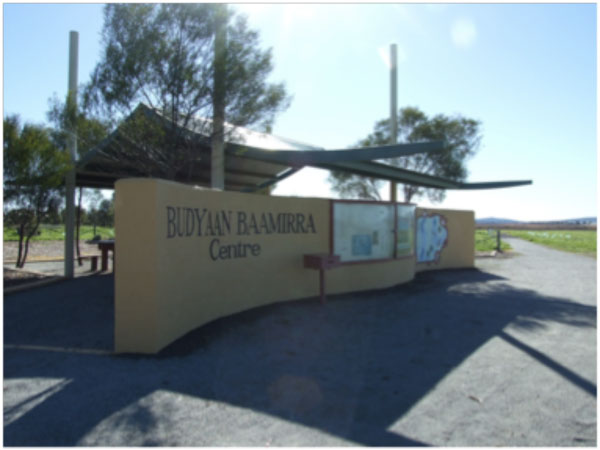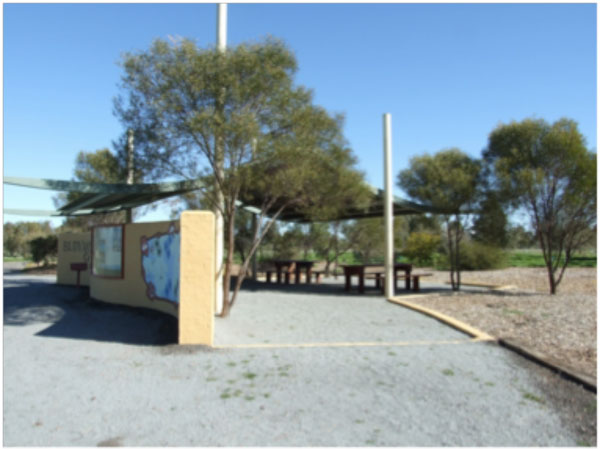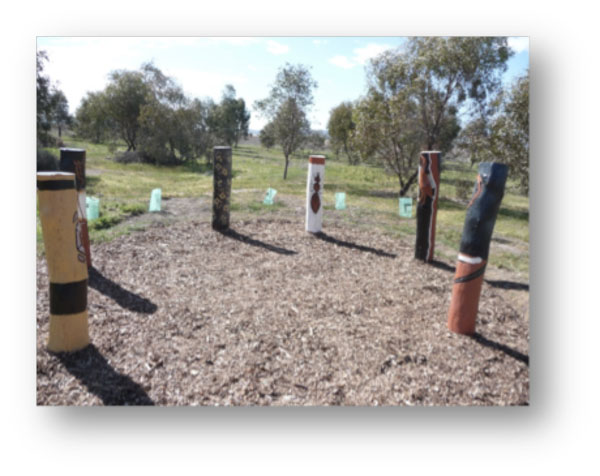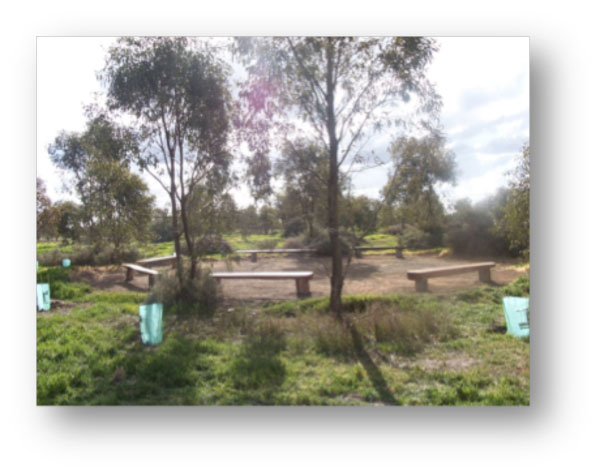Fivebough and Tuckerbil Wetlands
 Fivebough Wetlands - “Budyaan” (Birds) “Baamirra” (swamp/wetlands)
Fivebough Wetlands - “Budyaan” (Birds) “Baamirra” (swamp/wetlands)
Fivebough (400 ha) and Tuckerbil Wetlands (289 ha) located to the north east and north-west of Leeton respectively, and designated Ramsar wetlands in 2002 because of their international importance, are noted for the water bird populations, Fivebough wetlands as a breeding ground for Black Swans.
Fivebough Wetlands and Tuckerbil Wetlands were semi-permanent wetlands, part of a series of wetlandss and lagoons associated with a natural watercourse that flowed westerly across heavy clay soils onto the Murrumbidgee floodplain 15 km north of the river. The clays are overlain to the east of the wetlands by red earth soils grading up to an extensive sand hill with low elevation forming the Koonadan Historic Site.
The area was drained over a lengthy period in the mid-1900’s destroying the natural environment which is considered to have consisted of black box adjacent to the wetlands, and belah, saltbush and boree woodland on the higher areas. The low-lying areas spread to the Narrandera Range 10 km to the north east.
The following websites provide additional information:
Fivebough & Tuckerbil Wetlands Trust
http://fivebough.org.au/fivebough-wetland/

Wiradjuri Garden
Fivebough and Tuckerbil Wetlands have always been important to the local Wiradjuri people, particularly due to the abundance of edible plant and animal species present throughout the year.
The wetlands were historically used as stopovers when journeying between the Murrumbidgee River and the nearby mountains. Travelling from the river to the mountains each spring, Wiradjuri people would gather the eggs and nestlings of swans, ducks and other waterbirds, along with yabbies, mussels and various plant species.
The return journey in the autumn months would often see the addition of emu eggs and young to this diet of wetland species.
Sustainable Lifestyle
An important aspect of these food gathering practices was that only enough food for the next meal was taken at any one time and breeding stock was usually left unharmed. Such sustainable practices ensured that impacts on population numbers of food species were negligible and loss of a particular species through over-hunting was unlikely. Such sustainable practices are only now being adopted by the wider community, with modern society learning from the example of the past.
Many historical food species, both plant and animal, still thrive in the wetlands to this day. Plants used throughout the Wiradjuri garden section are all native and endemic to this area. Some of the plants used are; Ruby Salt Bush, Old Man Salt Bush, Spiny Salt Bush, Hills Indigo just to name a few. These plants are of spiritual and cultural Significance.
Story Poles
Each pole is representative of the different animals that are a significant part of Wiradjuri culture. Each animal represents a totem of the different Clans with-in the Wiradjuri Nation. Totems signify the spiritual connection to individual Clans.
Shelters\Huts
Wiradjuri People used material that was readily available to them with-in the area they were living to build shelter. Shelters were erected to provide protection from the weather and to provide a sleeping place for the family.
Fish Trap
Fish traps were used in small canals, billabongs or wetlandss where the fish were in abundant quantities. Rocks were arranged in a pattern as to trap fish as they swam upstream. Fish trapswere mainly utilised by Wiradjuri people that dwelt close to the river.
Learning Poles
Images depicted on these poles below are associated with Fivebough Wetlands. Each pole has a story or meaning attached to it.
Turtles, snakes and lizards were an invaluable part of Wiradjuri traditions and culture. Ants gathered seed from the local flora, leaving the seed at the entrance of their nest, making it easy to collect.
Hand prints depict man’s involvement in the shaping of Fivebough Wetlands.

This learning circle is provided for groups visiting Fivebough Wetlands

